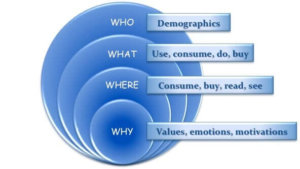As we debut the second half of the year, the ever-evolving landscape of customer experience (CX) is making business success even more challenging than usual.
Are you finding this too? If so, then I have some ideas to help.
We already know that businesses that embrace a customer-first strategy successfully lead their markets by driving growth from increased loyalty. To continue benefiting from this customer-centric approach, it is important to understand what has changed in 2024 and how companies should react to their customers’ ever-changing demands.
If you prefer to listen rather than read:
Business Success in 2024: The Key Trends
Here are the key trends of 2024 and some questions you may already be asking yourself about them. If not, then perhaps you should.
As always, I share my ideas and examples to help you make any changes you decide are needed.
AI-Driven Personalization:
What is it? AI-driven personalization leverages artificial intelligence and machine learning to analyze vast customer data and deliver highly customized experiences.
It is important because it enables businesses to anticipate customer needs and offer tailored recommendations, enhancing the customer experience and driving business success.
Example: eBay’s new magical listing tool uses artificial intelligence to extrapolate details about listings from images. As a result, sellers can list items easily, and buyers can access more information about potential purchases. (Source)
Data Privacy and Trust:
What is it? Ensuring customer data is handled with transparency and robust security measures.
With increasing regulatory scrutiny and customer awareness, businesses must build and maintain trust by protecting their customers’ information, which is vital for ongoing business success.
Example: To sustain their customers’ trust, companies should communicate clearly about data usage and adopt stringent security protocols to prevent data breaches.
Omnichannel Experiences:
What is it? Providing a seamless and integrated customer experience across multiple online and offline channels.
Customers expect consistent interactions and a unified experience, regardless of the channel they are using. This can enhance both their satisfaction and loyalty.
Example: Airbnb offers 24/7 support through various channels, ensuring customers receive timely assistance regardless of the platform they use. (Source)
Ethical AI:
What is it? Using AI responsibly and transparently avoids perpetuating biases and helps to maintain customer trust.
Ethical AI practices are essential for building long-term, trust-based customer relationships and ongoing loyalty.
Example: Businesses must be open about how they use AI in customer interactions and take steps to mitigate any negative impacts.
Empathy at Scale:
What is it? Combining AI-driven automation with human empathy enables your customer service team to handle complex customer issues more effectively.
This approach ensures that customers feel valued and understood, even when interacting with automated systems, contributing to continued customer satisfaction.
Example: Using AI to address simpler queries frees human agents to provide empathetic support for more complicated issues. It is also usually speedier,








 Let’s start at the very beginning – with the customer of course!
Let’s start at the very beginning – with the customer of course! They certainly have several needs, but you should aim to address only one of them.
They certainly have several needs, but you should aim to address only one of them.

 Do you know what needs your customer has and which of them you are tapping into?
Do you know what needs your customer has and which of them you are tapping into?

 OK I’m starting off slowly, but do you know who your customers are? Not who uses your category, but who the people are that actually buy your product or service today? How much do you really know about them?
OK I’m starting off slowly, but do you know who your customers are? Not who uses your category, but who the people are that actually buy your product or service today? How much do you really know about them?
